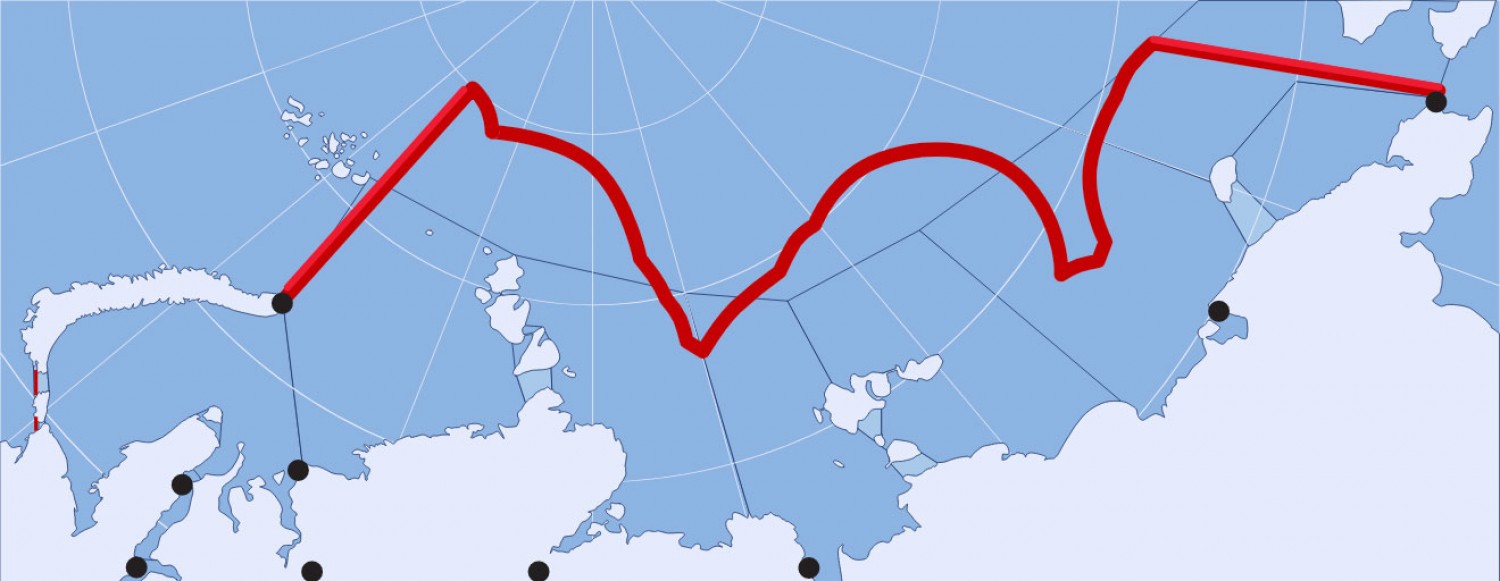You get both mechanical weakening of the sheet allowing the broken ice to move around and something I haven't seen quantified, the effect on the albedo (reflectivity) of the ice when it is broken and exposes a) the water underneath and b) the rough planes of the ice chunks. It might be nothing but with Russia basically planning a bus route back and forth for eight months of the year it might be important.
From the Barents Observer:
By year 2035, the Russian government intends to build at least 40 Arctic vessels, upgrade 4 regional airports, construct railways and seaports and facilitate a massive exploitation of Arctic natural resources.
The development plan for the Northern Sea Route was signed by Prime Minister Dmitry Medvedev just few days before the start of the new decade. The document has been in the making for some time and it was considered of great importance that it was approved and signed before the end of 2019.
Medvedev put his signature on the document on the 21st of December and it was published on the government website on the 30th. Behind its development stands Rosatom, the nuclear power company with top responsibilities for the Northern Sea Route. The document builds on President Putin’s decrees from May 2018 and the request to boost annual shipments on the Northern Sea Route to 80 million tons by year 2024.
Tight schedule
The Russian government and its respective agencies and state companies are in big hurry to meet targets for the remote Arctic sea route. The plan includes as many as 84 points and covers a wide range of priorities, from the development of needed infrastructure and building of new ships to the mapping of natural resources and launch of new satellites and meteorological equipment.

The Northern Sea Route includes the waters between archipelago Novaya Zemlya and the Bering Strait. Map by nsra.ru
The first of the priorities are to be completed already early 2020. Thus, by April, a regional geological exploration program is to be adopted. And by June, key decisions are to be taken on the development of a railway line to Sabetta, the seaport and LNG terminal in the northern coast of the Yamal peninsula.Also at the Barents Observer:
A massive development of natural resources is needed for Russian to meet its ambitions on the Arctic route and several of the country’s biggest companies are involved. Among them are oil and gas companies Novatek, Gazprom Neft, Rosneft and the Independent Oil Company. In addition comes minerals and ores developers like Nornickel, VostokCoal, Baimskaya, KAZ Minerals, Vostok Engineering and Severnaya Zvezda.
New ships
A big number of new vessels are part of the plan. By year 2035, about 40 new vessels are to be built, several of them nuclear icebreakers. In addition to five LK60 icebreakers, the country will build three Lider-class vessels, the first one to be ready for operations in December 2027. The second and third ships are to be ready in late 2030 and 2032 respectively.....MORE
Rosatom eyes shipments of grain on Northern Sea RouteWell, that makes more sense than shipping salmon across the top of the world in a forty-year-old nuclear-powered container ship.
Up to 1 million tons could be shipped annually to the seaport of Sabetta and from there exported to Southeast Asian countries, the state company believes.
Nov. 11
Russian Plan For Second Salmon Hauling Voyage With Their Nuclear-Powered Container Ship Cancelled